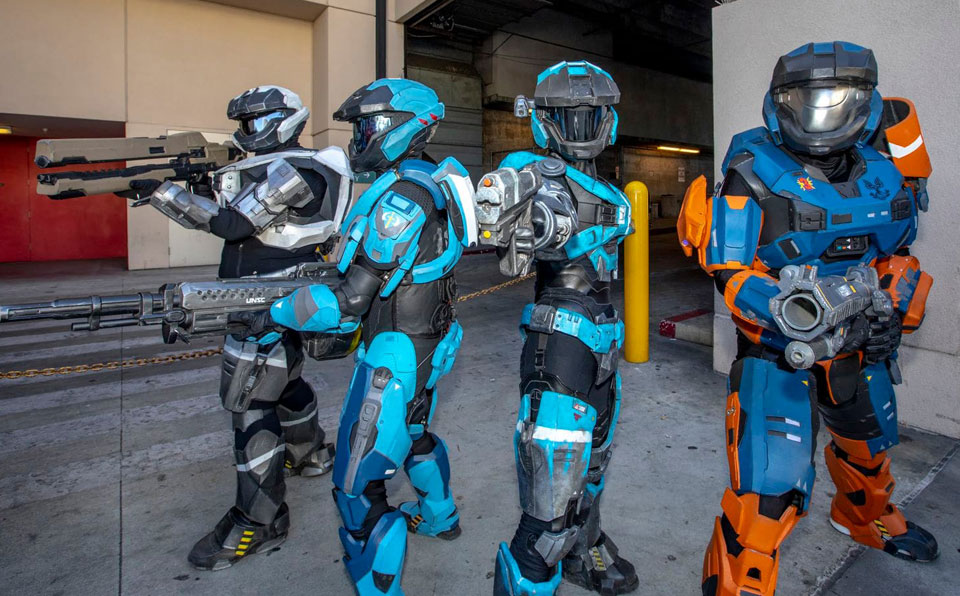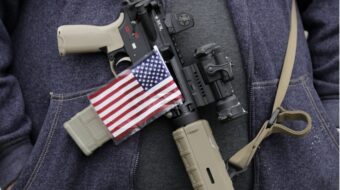
Last week Walmart ordered the removal of video game displays that depicted any form of violence from stores nationwide. The internal memo asked that employees strip any violent marketing material, unplug Xbox and PlayStation consoles that show violent video games and turn off any violence depicted on screens in its electronics departments. This request came as a response to a series of mass shootings that happened over the course of a week, first in El Paso, Texas, then later in Dayton, Ohio.
In the aftermath of the attacks, the media searched for answers to the ongoing gun violence epidemic plaguing the country. The El Paso shooter, a 21-year-old identified as Patrick Crusius, uploaded a hate-filled manifesto online just minutes before opening fire. The document titled “The Inconvenient Truth” seemed to draw direct inspiration from Trump’s own rhetoric, calling his actions a response to “the Hispanic invasion of Texas.”
In the days following the incident President Donald Trump commented on the Dayton and El Paso shootings, casting blame on the “gruesome and grisly video games that are now commonplace.” Republican House Minority Leader Kevin McCarthy echoed similar statements, telling Fox News he felt violent games present “a problem for future generations and others.”
The notion that video games are to blame for white supremacist violence is just one in a long line of evasion tactics by political figureheads who refuse to implement common-sense gun regulations. Although this allegation has long since been debunked, the video gaming industry has continuously faced scrutiny since the early ’90s when consoles started appearing in people’s homes. The launch of the Mortal Kombat video game series actually stirred such widespread outrage over its graphic content that it resulted in the creation of the Entertainment Software Rating Board (ESRB) game rating system in 1994.
The irony lies in the fact that there have actually been more efforts by policymakers to tackle the “virtual violence” that many video games depict, rather than the real-life gun violence plaguing the nation. Despite Trump’s assertions, there is no actual scientific link between video games and gun murders.
There have been studies showing a short-term increase in “aggressive thoughts and feelings” after playing video games, but nothing that manifested to a level of physical violence. In 2017, the Media Psychology and Technology division of the American Psychological Association even released a statement, suggesting reporters and policymakers cease linking mass shootings to violent media, given the lack of evidence of any correlation.
Many researchers also point to recent empirical evidence indicating that places like Japan and South Korea both have a higher video game revenue per-person. Both countries not only see drastically less violent gun deaths, but the U.S. seems to be a global outlier in gun violence overall. Although statistically, the U.S. exhibits an above-average crime rate, our homicide rate is high because assaults carried out by guns are much more likely to turn lethal than assaults committed with knives, or fists.
The gaming industry, however, hasn’t always been the focus of a political “blame game.” In 1996 two teenagers gunned down 12 students and one teacher at their Colorado high school before taking their own lives. The media fixated on the trivial details of their lives; what they wore, what pop culture they consumed. Having discovered that the two shooters listened to alternative rock and death metal, the media began speculating.
At the time, Columbine was one of the largest mass shootings to ever be carried out – and the public was desperate to create a narrative out of what otherwise seemed like a senseless act of violence. In the days following the initial tragedy, the Columbine massacre was widely blamed on singer Marilyn Manson, an accusation the singer claims was catastrophic to his career.
The public’s fixation on the shooter’s taste in music echoed a historical pattern of moral panic. Prior to the Columbine shooting, hip hop similarly experienced widespread criticism in the late ’80s and early ’90s – with rap groups like N.W.A. being accused of inciting violence against the police. Before that, comic books became a hot-button issue in the late 1940s to the mid-1950s, due to their depiction of sometimes violent and explicit ‘crime.’ A national crusade was launched to get comics pulled from stores around the country.
Whether the media is blaming mass shootings on metal, rap music, or video games, the figurative message has always remained the same – policymakers have no intention of addressing gun violence. Even now, Walmart’s spokesperson has said the company hasn’t made any changes to its gun sales policy.
Although it remains doubtful that the Republicans will create a legislative strategy to address the ongoing gun violence epidemic, election season is approaching. The previous youth-led movement for national gun restrictions, that was sparked in the aftermath of the Parkland shooting, has mostly faded into the backdrop, stifled by politicians who are in the pockets of the National Rifle Association. The nation will once again have another opportunity to vote on the issues that matter.










